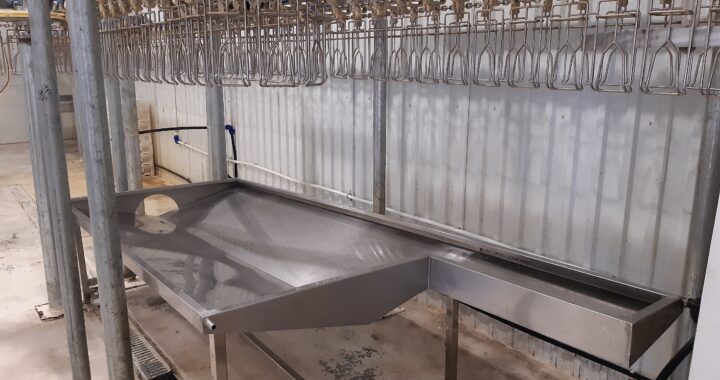MEP cost management strategies

Mechanical, electrical, and plumbing (MEP) installations are crucial in modern structures because they maintain a human-friendly indoor environment for extended periods of time. However, MEP solutions account for many construction projects’ major building costs, typically reaching 30% of the budget.
Fortunately, various techniques exist to reduce the cost of MEP systems while retaining function. Smart design decisions allow you to save money while boosting some aspects of the construction project. MEP design substantially impacts energy and water use, and competent engineering advice can save thousands of riyals on utility expenses. In this piece, we’ll look at some practical techniques to reduce the cost of MEP installation. As an MEP contractor, it is in your best interest to finish.
What are MEP cost management strategies?
MEP cost management solutions develop effective, budget-friendly policies and practices for MEP installation activities. Experienced engineers supervise the full planning and design to ensure accurate cost and budget estimates for the MEP and HVAC systems. Building Information Modeling enables extensive 3D modeling and planning, resulting in improved vision and forecasting. Efficient procurement involves partnering with suppliers and contractors to obtain bulk supplies. Effective project management skills are used to provide milestones on time to meet the building timeframe.
Why cost management is important?
Cost estimation and control are critical in any project. It determines the optimum solution for completing the tasks within the budget and timeframe. Mechanical, electrical, and plumbing systems are the primary infrastructure components of building work; all machinery and equipment selections are budget-based. The initial consultation and discussion determined the cost and budget. The project manager consults specialist engineers and architects on plans and designs. Then, he calculates the material, supply, and labor expenses. Then, he assesses equipment prices and organizes a cost-effective approach to maximize the use of existing resources within a constrained budget. He eventually provides an average cost estimate by analyzing the expenses of several factors.
The Project Cost Estimation Process
Building cost estimation is an important part of managing construction. Before a structure can be designed, architects and builders must develop a cost base that can be used to compare the actual cost of completed work. With an accurate cost estimate, project managers can maintain track of current work and ensure it stays on budget. To produce an accurate cost estimate, MEP engineers must first identify what needs to be built. Cost estimation is frequently performed near the end of the design stage. An approximate estimate can be made before the design is completed, but a thorough computation necessitates construction drawings and specifications.
MEP maintenance work includes all electrical and maintenance work related to mechanical and plumbing systems, as well as repairs, installation, and inspection. Building Information Modelling (BIM) is a design technique that significantly facilitates cost estimation. MEP engineers can generate a computerized model of the entire building system and allocate material properties to individual sections afterward. The material take-off can take a few days if done manually, although contemporary technologies can complete calculations in seconds.
HVAC System Cost Management
Heating, cooling, and other main HVAC systems are among building development’s most expensive MEP components. However, the cost of these appliances is primarily determined by their declared capacity. There is a common belief that having more extensive machinery is helpful. Nonetheless, you are overspending. Furthermore, oversizing drives up maintenance costs.
Whenever a building’s thermal exterior is practical, it can better retain internal heat in the winter while blocking off outdoor heat in the summer. Unlike a structure with the minimum insulation required by code, this one can maintain an optimal temperature with less air conditioning and heating. As a result, ventilation and air conditioning systems can be smaller in size and design, cutting initial costs.
Conclusion
Each entrepreneur desires his efforts to be as profitable as possible. The greatest method to maximize profits is to manage budgets and expense schedules from the outset of operations. The schedule establishes working stages with varying-level milestones in relation to periodic costs and budgets. Monitoring every technical and maintenance work period can help to promote sustainable growth. Lowering labor costs and extending work hours can help use resources and time as efficiently as feasible. Always obtain MEP cost estimates from competent engineers and reputable contractors.

 Virginia Business Blueprint: How to Kickstart Your Entrepreneurial Journey
Virginia Business Blueprint: How to Kickstart Your Entrepreneurial Journey  The Role of Udyam Registration in Atmanirbhar Bharat Abhiyan
The Role of Udyam Registration in Atmanirbhar Bharat Abhiyan  Mango Costs in Pakistan 2024: A Total Diagram
Mango Costs in Pakistan 2024: A Total Diagram  Why Professional Power Management Can Make or Break Your Event
Why Professional Power Management Can Make or Break Your Event  Experience The Thrill Of Zipline Dubai With Captain Dunes
Experience The Thrill Of Zipline Dubai With Captain Dunes  Exploring London’s Best Butcher Shops
Exploring London’s Best Butcher Shops  Enhance Your Shop Appeal with Sydney’s Best Carpentry Services
Enhance Your Shop Appeal with Sydney’s Best Carpentry Services  A Detailed Look at the Features of the LEGO Technic Mars Crew Exploration Rover
A Detailed Look at the Features of the LEGO Technic Mars Crew Exploration Rover